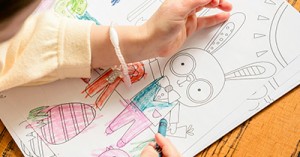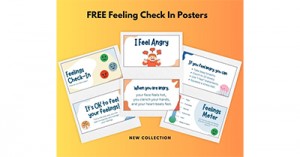Empathy can be understood as the experience of understanding another person's condition from their perspective. The trait is considered one of the most important life skills that children can learn since it not only nurtures interpersonal relationships, thereby making for a strong support network in adulthood but has been linked to positive life outcomes too. The following article provides strategies for promoting empathy in children.
To empathise with someone is to comprehend his feelings, or more accurately, to comprehend your own feelings if you were in his shoes. Although it is somewhat more complicated, it is an extension of self-concept. It necessitates being conscious of the fact that other people have thoughts and images about themselves that are both similar to and dissimilar from your own, as well as the feelings you associate with them.
How Children Develop Empathy
Children show the beginnings of empathy within the first day or two of life. Other newborns in the nursery of a hospital will frequently start wailing when a newborn starts crying. Such sobs are not genuine expressions of empathy. The newborn infant seems to be merely reacting, as she would to any loud noise, to a sound that disturbs her.
When toddlers attempt to initially relate another person's distress to their own, they occasionally display behaviour that is closer to actual empathy. A 2-year-old may offer his mother a toy he's been playing with or a cookie he's been eating if he notices her sobbing. He is giving his mother something that, when he has sobbed, has helped him feel better. While a puppy will approach a person who is crying and lick their face, it is uncertain whether the child knows what his mother is feeling or is merely bothered by how she is acting.
A child starts to connect his emotions with other people's sentiments around the age of four. Some 4-year-olds may approach a child who claims to have a stomachache and offer to console him. Others will stroll over to the child and hit him in the stomach, much to the consternation and distress of parents and teachers.
But in each instance, the healthy child is expressing sympathy for the sick person. The angry child is unsure of how to use the expertise he has been honing. He doesn't like the agony of the other child. He gets angry and lashes out instead of fleeing or rubbing his tummy like he may have done a year before.
Strategies For Promoting Empathy
Know The Right Time
Sharing and adopting another perspective doesn’t come easy to children. It is only by five or six that they are able to understand other points of view. This forms the basis of agreeing to share toys or taking turns to use the swing.
To find out the right time you can introduce your young learners to games and activities that require putting themselves in one another’s shoes – essentially adopt an empathetic approach.
Use Stories
Stories can become highly valuable resources for nurturing empathy in children. While they may not be able to understand why they must share a favourite doll with a mate who is feeling sad or hug a friend who has scraped their knee, the same attitudes of kindness and compassion can emerge far more easily upon hearing stories. Good narratives allow listeners or viewers to live the lives of its characters vicariously. In other words, such stories encourage children to adopt another person’s – the character’s – point of view and feel what the characters are feeling.
You can help the process further by asking children to play-act parts of a favourite book or have them brainstorm other possible solutions after watching inspiring movies. Such activities would help them practise careful reflection on how others are feeling in a given situation and thereby build the skills needed for empathetic behaviour.
Build A Moral Identity
The other advantage of using stories is that it lays the foundation for moral values; rather than just talking about abstract concepts like good and bad or right and wrong, it is far more effective to illustrate these ideas through stories. Once the fundamental morals are established, children can then be given positive feedback when they behave, say kindly and generously. As they get older, they can be praised for being helpful and kind persons overall – rather than for occasional positive actions – thus fostering a moral identity.
Conversely, if a child speaks or acts insensitively, extend a do-over opportunity, rather than a punishment. Helping them realise that they have hurt someone and then allowing them to make amends will help in fostering empathy.
Finally, bear in mind that empathy can be learned only in a supportive context. So reflect on your own behaviours along with getting parents on board. Living in an intensely competitive world often makes adult role models notice and praise academic achievements even if they say they appreciate kindness. The more children see their elders practising empathy in action, the likelier they are to become empathetic themselves.
Further Reading
The Kindness Curriculum - The Kindness Curriculum has a range of activities that support young children to explore 12 attributes of kindness-building agency, initiate their own learning and develop their self-identity.
Supporting Children Developing Friendships - The following provides information on The Benefits of Childhood Friendships, Supporting Children Developing Friendships, Dealing With Friendship Problems
Reference:
How Children Develop Empathy, Psych Central
Empathy In Children, Parenting Science







 As an Educator in Australia, your pay rate falls under the Children’s Services Award 2010. This award states the minimum amount that an employer can
As an Educator in Australia, your pay rate falls under the Children’s Services Award 2010. This award states the minimum amount that an employer can When working as a qualified Early Childhood Teacher (with a university degree) within a service, your rate of pay will come from the Educational Services
When working as a qualified Early Childhood Teacher (with a university degree) within a service, your rate of pay will come from the Educational Services When working as a Diploma Qualified Educator your pay rate is from the Children's Services Award 2010. This Award states your minimum rate of pay
When working as a Diploma Qualified Educator your pay rate is from the Children's Services Award 2010. This Award states your minimum rate of pay When working as a Cert 3 Qualified Educator, your pay rate is from the Children's Services Award 2010. This Award states your minimum rate of
When working as a Cert 3 Qualified Educator, your pay rate is from the Children's Services Award 2010. This Award states your minimum rate of Educational Leaders play a crucial role in their early childhood service by ensuring that the educational program aligns with best practices and supports the holistic
Educational Leaders play a crucial role in their early childhood service by ensuring that the educational program aligns with best practices and supports the holistic In early childhood education and care, ratios are more than a technicality—they are a frontline safeguard. Every child deserves responsive supervision, emotional connection, and developmental
In early childhood education and care, ratios are more than a technicality—they are a frontline safeguard. Every child deserves responsive supervision, emotional connection, and developmental With the new national child safety reforms kicking in on 1 September 2025, early childhood services like yours have a real opportunity to lead the
With the new national child safety reforms kicking in on 1 September 2025, early childhood services like yours have a real opportunity to lead the Here’s a comprehensive Mobile Phone and Smart Watch Policy tailored for early childhood education and care (ECEC) services in Australia, aligned with the latest 2025
Here’s a comprehensive Mobile Phone and Smart Watch Policy tailored for early childhood education and care (ECEC) services in Australia, aligned with the latest 2025 The Sea of Fish Challenge is a national initiative that invites children, educators, families, and communities to create and display fish artworks as a symbol
The Sea of Fish Challenge is a national initiative that invites children, educators, families, and communities to create and display fish artworks as a symbol Across the early childhood education and care sector, educators are sounding the alarm: current staffing ratios are insufficient to deliver safe, meaningful, and developmentally appropriate
Across the early childhood education and care sector, educators are sounding the alarm: current staffing ratios are insufficient to deliver safe, meaningful, and developmentally appropriate


